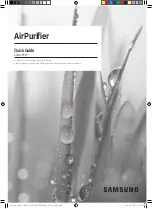
Manual
2100-234
I
Page
7 of 17
DUCT WORK
All duct work, supply and return must be properly sized
for the design air flow requirement of the equipment. Air
Conditioning Contractors of America (ACCA) is an
excellent guide to proper sizing. All duct work or
portions thereof not in the conditioned space should be
properly insulated in order to both conserve energy and
prevent condensation or moisture damage.
Refer to Table 9 for maximum static pressure available
for duct design.
Design the duct work according to methods given by the
Air Conditioning Contractors of America (ACCA).
When duct runs through unheated spaces, it should be
insulated with a minimum of one inch of insulation. Use
insulation with a vapor barrier on the outside of the
insulation. Flexible joints should be used to connect the
duct work to the equipment in order to keep the noise
transmission to a minimum.
Ducts through the walls must be insulated and all joints
taped or sealed to prevent air or moisture entering the
wall cavity.
Some installations may not require any return air duct. It
is recommended that on this type of installation that a
filter grille be located in the wall. Filters must be of
sufficient size to allow a maximum velocity of 400 FPM.
NOTE: If no return air duct is used, applicable
installation codes may limit this cabinet to
installation only in a single story structure.
FILTERS
A one inch throwaway filter is supplied with each unit.
The filter slides into position making it easy to service.
This filter can be serviced from the outside by removing
the service door. A 2-inch pleated filter is also available
as an optional accessory. The internal filter brackets are
adjustable to accommodate the 2-inch filter by bending
the metal tabs holding the 1-inch filter down. There are
two tabs on each side of the filter.
FRESH AIR INTAKE
All units are built with fresh air inlet slots punched in the
service panel.
If the unit is equipped with a fresh air damper assembly,
the assembly is shipped already attached to the unit. The
damper blade is locked in the closed position. To allow
the damper to operate, the maximum and minimum blade
position stops must be installed. See Figure 2.
All capacity, efficiency and cost of operation information
as required for Department of Energy “Energyguide” Fact
Sheets is based upon the fresh air blank-off plate in place
and is recommended for maximum energy efficiency.
The blank-off plate is available upon request from the
factory and is installed in place of the fresh air damper
shipped with each unit.
CONDENSATE DRAIN
This unit employs an automatic condensate disposal
system consisting of a base drain pan, drain valve and fan
blade with slinger ring. A plastic drain hose extends from
the evaporator drain pain at the top of the unit to the base
drain pan at the bottom. At temperatures above 40°, the
drain valve located between the condenser coil and fan
shroud is closed allowing water to build up in the base to
a height of 5/8" to 3/4". The fan blade with slinger then
rotates in this water and throws the water onto the
condenser coil. This disposes of the water by
evaporating it on the hot condenser.
At temperatures below 40°, the drain valve opens
draining the base pan and preventing freeze ups that
could damage the coil or fan blade.
FIGURE 2
FRESH AIR DAMPER
Summary of Contents for WA121
Page 5: ...Manual 2100 234I Page 5 of 17 FIGURE 1 UNIT DIMENSIONS FACTORY BUILT AT 5 INCHES...
Page 9: ...Manual 2100 234I Page 9 of 17 FIGURE 3 MOUNTING INSTRUCTIONS...
Page 11: ...Manual 2100 234I Page 11 of 17 FIGURE 6 COMMON WALL MOUNTING INSTALLATIONS...
Page 13: ...Manual 2100 234I Page 13 of 17 FIGURE 7 LOW VOLTAGE WIRING...



































